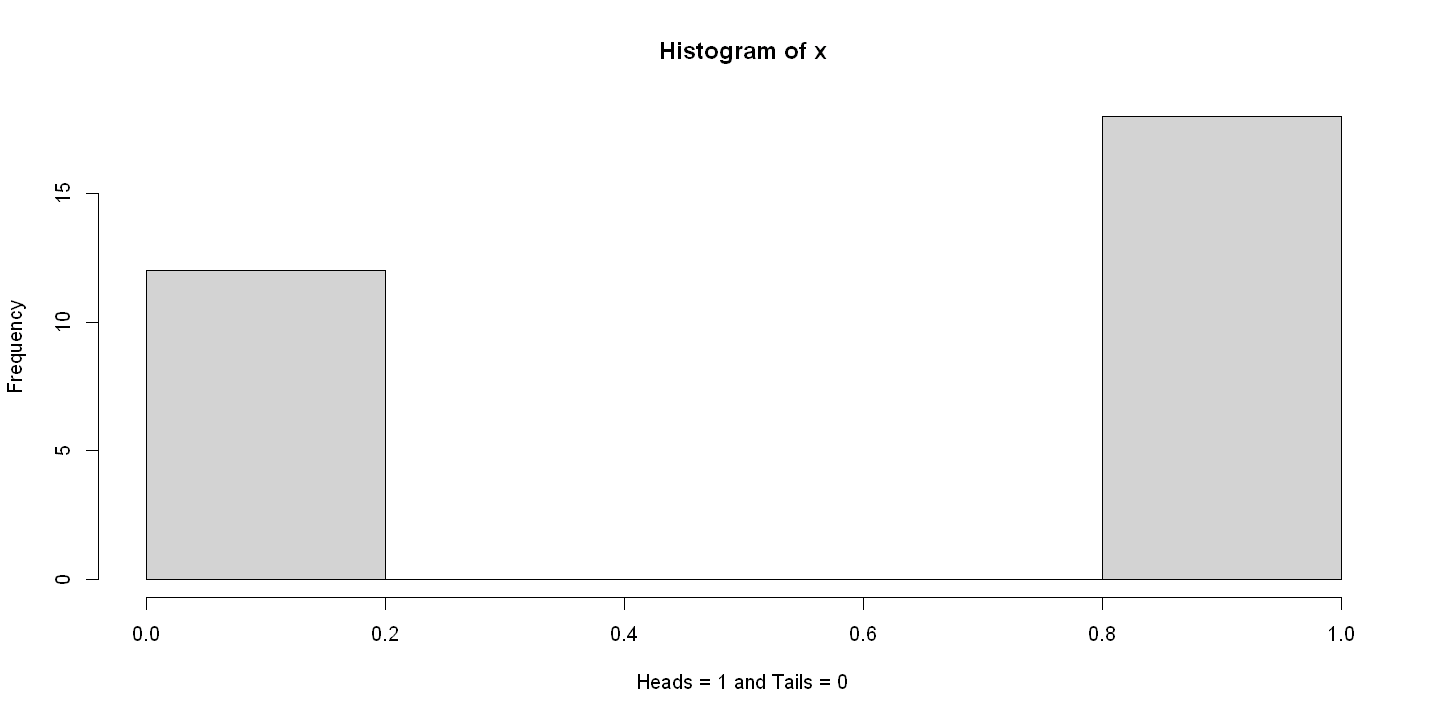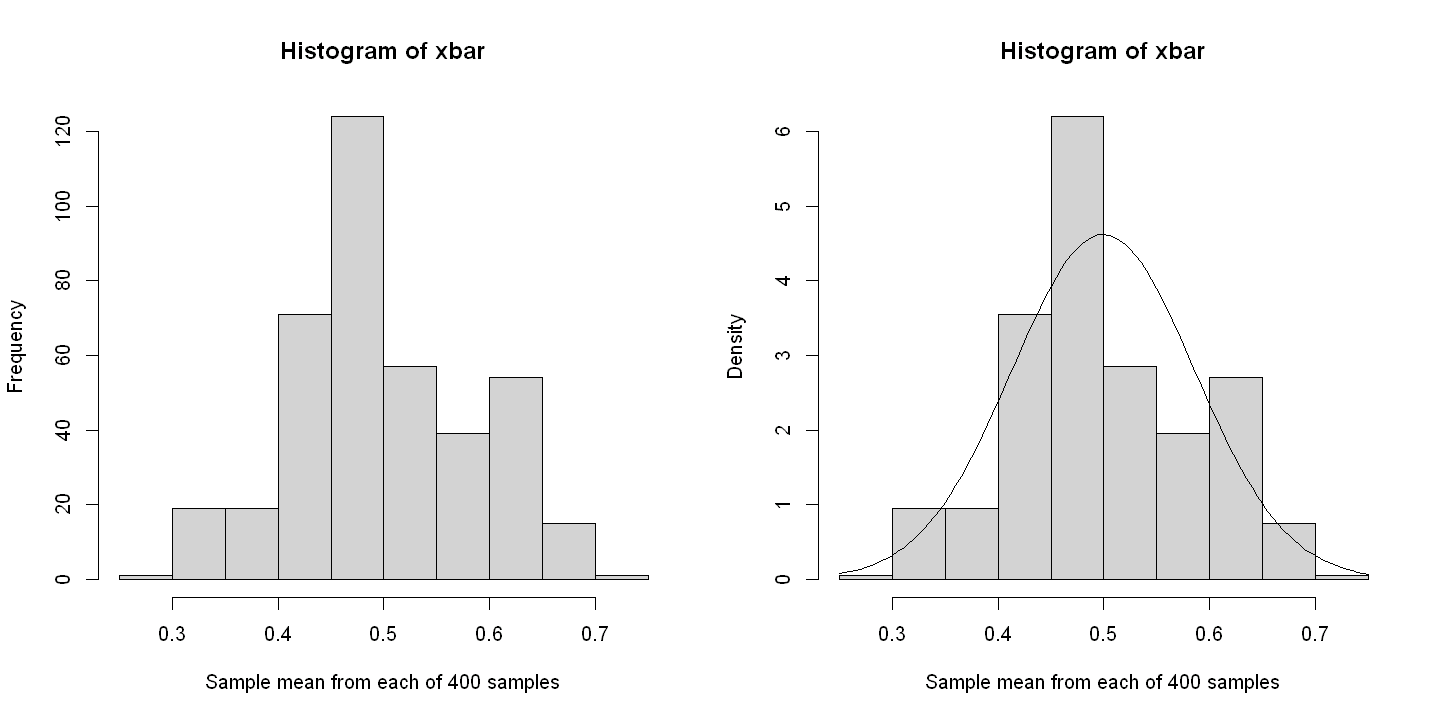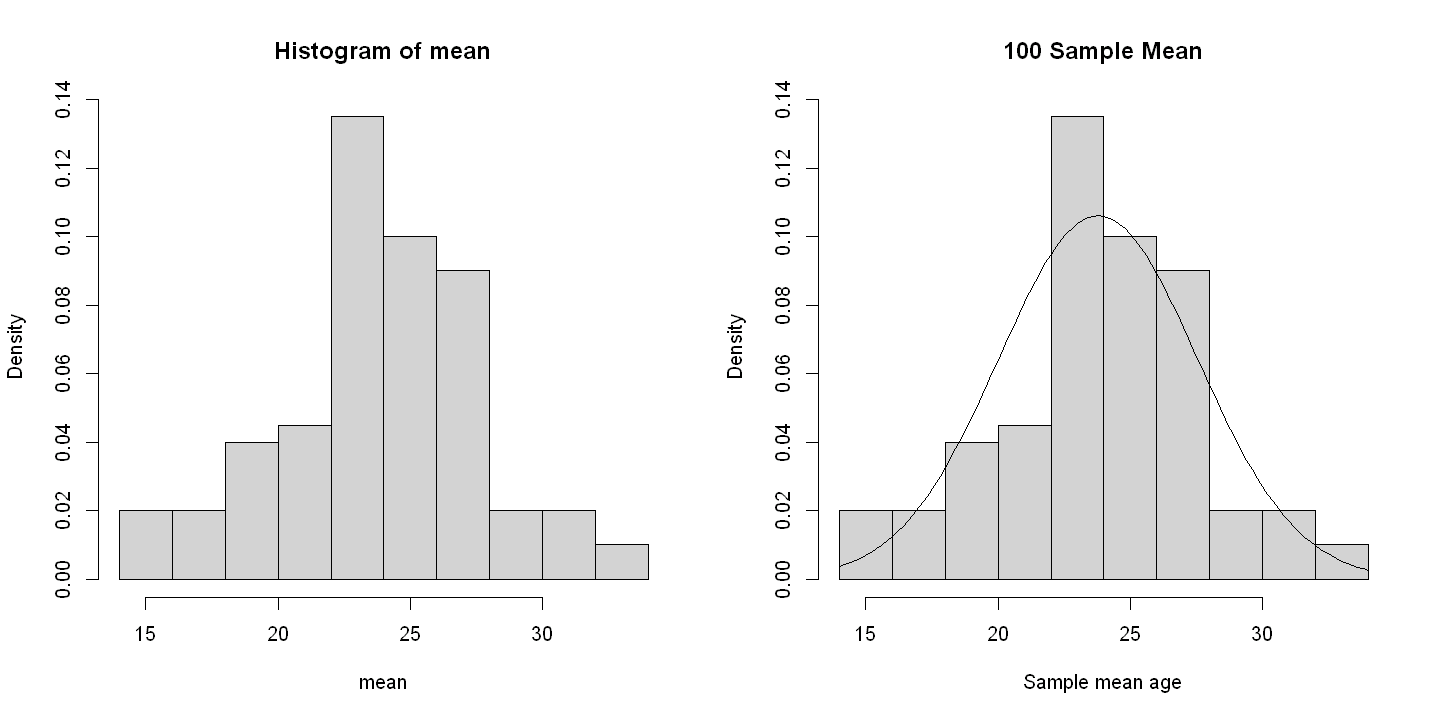3. CHAPTER 3. THE SAMPLE MEAN#
SET UP
library(foreign) # to open stata.dta files
library(psych) # for better sammary of descriptive statistics
library(repr) # to combine graphs with adjustable plot dimensions
options(repr.plot.width = 12, repr.plot.height = 6) # Plot dimensions (in inches)
options(width = 150) # To increase character width of printed output
3.1. 3.2 SAMPLE GENERATED BY AN EXPERIMENT: COIN TOSSES#
# Draw one sample of size 30 from Bernoulli mu = p = 0.5
rm(list=ls())
set.seed(10101)
u = runif(30,min=0,max=1)
x = ifelse(u > 0.5, 1, 0)
print(describe(cbind(x,u)))
table(x)
vars n mean sd median trimmed mad min max range skew kurtosis se
x 1 30 0.60 0.50 1.00 0.62 0.00 0.00 1.00 1.00 -0.39 -1.91 0.09
u 2 30 0.52 0.31 0.57 0.52 0.37 0.02 0.98 0.95 -0.17 -1.39 0.06
x
0 1
12 18
3.2. Figure 3.1: First panel#
rm(list=ls())
df = read.dta(file = "Dataset/AED_COINTOSSMEANS.DTA") # Data for 400 coin tosses
attach(df)
# Summarize the data set
print((describe(df)))
print(head(df, n=5))
vars n mean sd median trimmed mad min max range skew kurtosis se
xbar 1 400 0.5 0.09 0.5 0.5 0.10 0.27 0.73 0.47 -0.02 -0.27 0
stdev 2 400 0.5 0.01 0.5 0.5 0.01 0.45 0.51 0.06 -2.03 4.40 0
numobs 3 400 30.0 0.00 30.0 30.0 0.00 30.00 30.00 0.00 NaN NaN 0
xbar stdev numobs
1 0.3333333 0.4794633 30
2 0.5000000 0.5085476 30
3 0.5333334 0.5074162 30
4 0.5666667 0.5040069 30
5 0.5000000 0.5085476 30
3.3. 3.4 SAMPLING FROM A FINITE POPULATION: 1880 U.S. CENSUS#
3.3.1. Figure 3.3#
# Means from 100 samples of size 25
rm(list=ls())
df.age = read.dta(file = "Dataset/AED_CENSUSAGEMEANS.DTA")
print((describe(df.age)))
vars n mean sd median trimmed mad min max range skew kurtosis se
mean 1 100 23.78 3.76 23.76 23.85 3.35 14.60 33.44 18.84 -0.13 0.14 0.38
stdev 2 100 18.25 2.89 18.43 18.29 3.08 12.36 25.31 12.94 -0.11 -0.59 0.29
numobs 3 100 25.00 0.00 25.00 25.00 0.00 25.00 25.00 0.00 NaN NaN 0.00
print(head(df.age, n=5))
mean stdev numobs
1 27.84 20.70765 25
2 19.40 16.00000 25
3 23.28 19.02087 25
4 26.84 20.50951 25
5 26.56 20.19299 25
attach(df.age)
par(mfrow=c(1,2))
# Figure 3.3 second panel Histogram for 100 means
hist(mean, freq=FALSE)
# Figure 3.2 second panel Histogram for 100 means plus normal curve
hist(mean, main="100 Sample Mean", xlab="Sample mean age", freq=FALSE)
x<-seq(0, 50, by=0.2)
curve(dnorm(x, mean(mean), sd(mean)), add=TRUE)
3.4. 3.7 COMPUTER GENERATION OF A RANDOM SAMPLE#
# Single sample
set.seed(10101)
x=runif(100,min=3,max=9)
y=rnorm(100,5,2)
# Mean of 400 coin toss samples each of size 30
set.seed(10101)
result.mean=array(dim=400)
result.stdev=array(dim=400)
for(i in 1:400){
x=rbinom(30,1,0.5)
result.mean[i]=mean(x)
result.stdev[i]=sd(x)
}
mean(result.mean)
sd(result.mean)
summary(result.mean)
0.500583333333333
0.0907728121478548
Min. 1st Qu. Median Mean 3rd Qu. Max.
0.2667 0.4333 0.5000 0.5006 0.5667 0.7667


